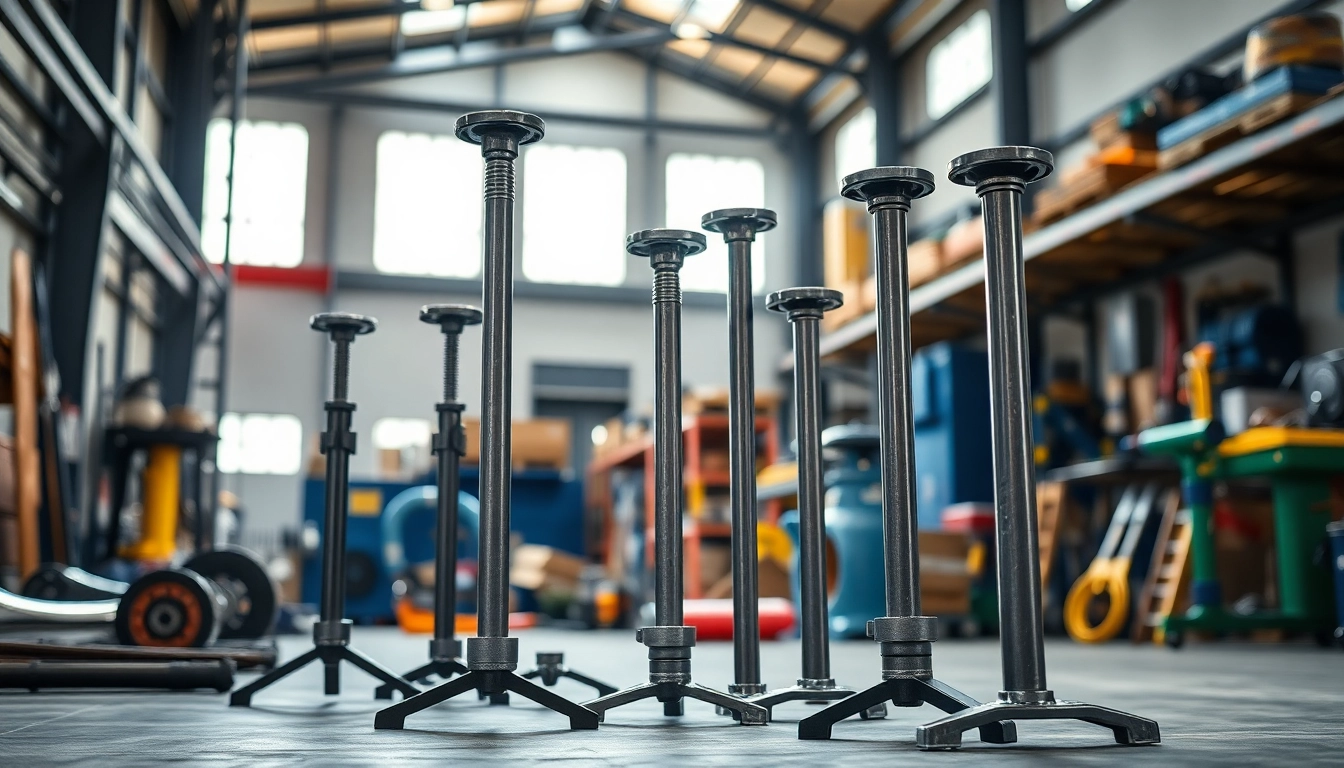Understanding Pipe Stands
What Are Pipe Stands?
Pipe stands are highly specialized support devices designed to hold various types of pipes during construction, maintenance, and repair tasks. These stands are essential for ensuring safety and stability while working with heavy materials, preventing accidents and injuries that might occur due to pipes falling or shifting unexpectedly. Pipe stands are designed to support pipes at particular heights, providing a stable platform from which to carry out welding or cutting operations. An adjustable design typically allows these stands to accommodate different pipe sizes and weight specifications, making them versatile tools in any industrial application.
Common Applications for Pipe Stands
Pipe stands find extensive use across various industries such as construction, plumbing, and welding. Some common applications include:
- Welding Operations: Pipe stands provide a secure base for pipes during welding, making it easier for welders to access different angles without compromising their safety or the quality of their work.
- Plumbing Installations: In plumbing, pipe stands help support pipes while they are being connected, allowing for accurate alignment and secure fittings.
- Manufacturing Processes: Various manufacturing settings utilize pipe stands for the handling and processing of raw materials.
- Maintenance Tasks: During repair or maintenance tasks, pipe stands hold pipes securely, enabling technicians to work efficiently without the risk of dropping heavy materials.
Key Features to Look For in Pipe Stands
When selecting pipe stands, several key features should be taken into account to ensure you are making an informed purchase:
- Adjustability: Look for stands that allow height adjustments to accommodate various pipe sizes and elevate them for comfortable working positions.
- Weight Capacity: Depending on the type of work you are undertaking, it’s crucial to choose pipe stands with a sufficient weight capacity to safely support the materials you’ll be using.
- Stability and Base Design: A wide and sturdy base will provide additional safety and prevent the stands from tipping over, especially when loaded with heavy pipes.
- Durability: Opt for high-quality materials that can withstand harsh working conditions and regular use on job sites.
Types of Pipe Stands and Their Uses
Adjustable vs. Fixed Pipe Stands
Pipe stands can be classified primarily into two categories: adjustable and fixed.
Adjustable Pipe Stands: These stands feature mechanisms that allow users to modify the height, making them ideal for varying pipe sizes and different work environments. They are particularly useful in scenarios where pipes need to be elevated or lowered frequently to suit various operations.
Fixed Pipe Stands: Fixed stands come at a predetermined height and are typically used where a consistent working level is required. While they may be less versatile than adjustable options, they often provide increased stability due to their robust design.
Heavy-Duty Pipe Stands for Industrial Use
Heavy-duty pipe stands are designed for industrial applications that involve supporting significantly heavier materials. Features might include reinforced frames, higher weight capacities, and robust construction to endure rigorous demands. These stands are invaluable in heavy industries such as oil and gas, construction, and manufacturing, where safety and durability are paramount.
Specialized Pipe Stands for Welding Applications
Specialized pipe stands are tailored for upswing welding tasks, including those that involve significant angles or unorthodox positioning. These stands often include additional supports or rollers that allow for the smooth rotation of pipes, facilitating easier access for welders on all sides. Using specialized stands can enhance productivity while also ensuring that safety standards are upheld.
Safety Considerations When Using Pipe Stands
Proper Setup and Configuration
To ensure safety when using pipe stands, proper setup is crucial. Begin by placing the stands on a flat, stable surface. Ensure that all locks and adjustments are securely fastened before loading pipes onto the stands. Spreading the load evenly across multiple stands can also prevent tipping or collapse.
Weight Capacity and Load Management
It is essential to respect the weight limits of the stands you are using. Overloading stands beyond their rated capacity can lead to serious accidents, resulting in property damage and personal injury. Always check the manufacturer’s specifications for weight limits and consider using multiple stands to distribute the weight effectively.
Common Mistakes to Avoid with Pipe Stands
Avoid these common pitfalls when working with pipe stands:
- Neglecting regular inspections for wear and tear.
- Setting up stands on uneven or unstable surfaces.
- Forgetting to secure pipes after positioning, leading to movement.
Where to Buy Quality Pipe Stands
Top Online Retailers for Pipe Stands
When it comes to purchasing pipe stands, several online retailers offer a wide range of options. Websites such as Sumner Outlet and Airgas provide versatile pipe stands suited for various applications.
Comparing Prices and Features
Before making a purchase, it’s wise to compare multiple retailers to identify the best prices and features. Take note of any warranties or guarantees offered, as this can be an indicator of product quality and the manufacturer’s confidence in their products.
Reading User Reviews and Ratings
User reviews can provide valuable insights into the quality and performance of pipe stands. Pay attention to feedback regarding ease of use, stability, and the longevity of materials. This first-hand information can guide you toward a more informed purchasing decision.
Maintaining Your Pipe Stands for Longevity
Cleaning and Care Tips for Metal Stands
Keeping pipe stands clean is vital for longevity. Regularly wipe down the surfaces to remove any debris, oil, or residue. Using a rust-inhibiting spray can prevent corrosion, ensuring the stands remain robust and safe over time.
Inspecting for Wear and Tear
Routine inspections are crucial to maintaining the integrity of your pipe stands. Check for any structural damage, loose bolts, or signs of wear that could compromise their load-bearing capacity. Addressing wear and tear promptly can prevent accidents.
Upgrading and Modifying Existing Stands
Consider upgrading or modifying your existing pipe stands to better meet your current needs. Options include adding modular components or retrofitting with additional supports. Enhancing your stands can improve versatility and expand their application range.



